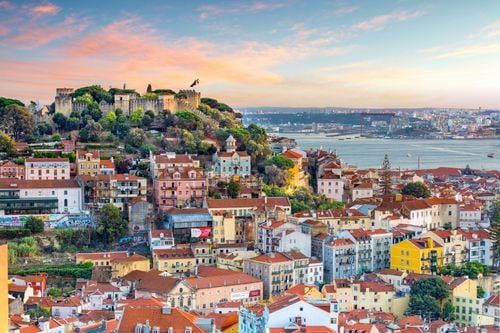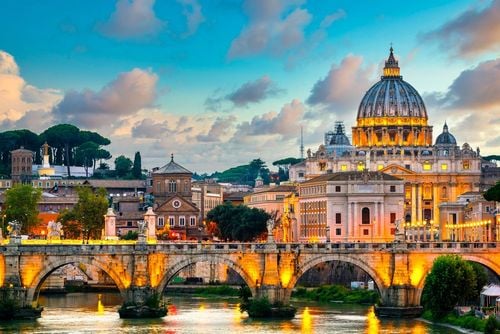The pearl of the Indian Ocean
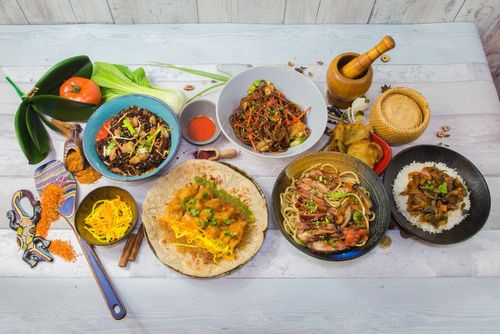

The pearl of the Indian Ocean
White sand, palm trees, bougainvillea and an endless turquoise lagoon... The scene is set. But behind this postcard image lies a destination of great cultural and natural diversity. Its exotic treasures spice up every corner of the island, from sugary paths and bike rides to crystal-clear waters, hikes, authentic villages and tropical gardens.
What makes Mauritius so endearing is the magnificent melting pot of its population. This melting pot of cultures can be felt in the few notes of sega, the market stalls, the coasts criss-crossed by pirogues and fishermen, and the traditional festivals, to name but a few.

The land of seven colors at Black River Gorges National Park
- © Tunatura / ShutterstockIf you want to see a more authentic face of Mauritius, you have to venture inland between the cane fields, plains, plateaux and sugar estates. In the centre of the country, you'll find a rugged landscape dotted with slender mountains, ancient volcano craters and waterfalls. The luxuriant nature explodes in all its forms and surprises with its vivid colours and intoxicating fragrances.

Crystal coral near Bénitiers Island
- © Robert Mandel / ShutterstockSet course for the island's capital, Port Louis, a veritable kaleidoscope of colours and atmospheres. It reflects a fascinating history, with old colonial mansions, pagodas in Chinatown, Indian stalls and glitzy boutiques on the Waterfront, not forgetting minarets, mosques and the immense buildings of the business district. We start the day at the covered market, which opens at dawn, then lose ourselves in the narrow streets of old Port Louis. We then stroll along the Caudan Waterfront square to the Blue Penny Museum. Philatelists will want to visit the Mauritius Postal Museum, while photography enthusiasts should head for the Musée de la Photo in old Port Louis.
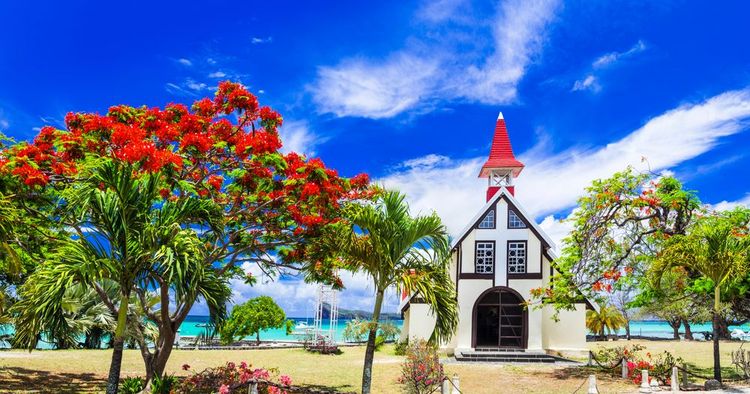
The famous red church on the beach
- © leoks / ShutterstockJust 1km from Caudan is the racecourse under the coconut trees at Champ de Mars. Every weekend from April to November, Mauritians gather to bet on their favourite horse. The racecourse was founded in 1812 and is one of the oldest in the world. The end of August is marked by the Maiden Cup.
The north of the island is the least windy and the least rainy. This region is also the most popular with tourists. Trou aux Biches, Pereybère, Mont Choisy and Cap Malheureux are all must-sees. Not forgetting Grand Baie, the island's liveliest and most popular seaside resort. In this part of the island, you can visit historic sites such as the Pamplemousse botanical garden, the Château Labourdonnais and the Aventure du Sucre. You can also take a trip to the Indian quarter, Goodlands, to explore Historic Marine, a model ship factory.
A trip to the south of the island allows you to immerse yourself in its wildest and most unspoilt side. Its coastline is almost untouched (despite the passage of the Japanese ship Wakashio, which left an oil slick) and is dotted between tea plantations and cane fields.
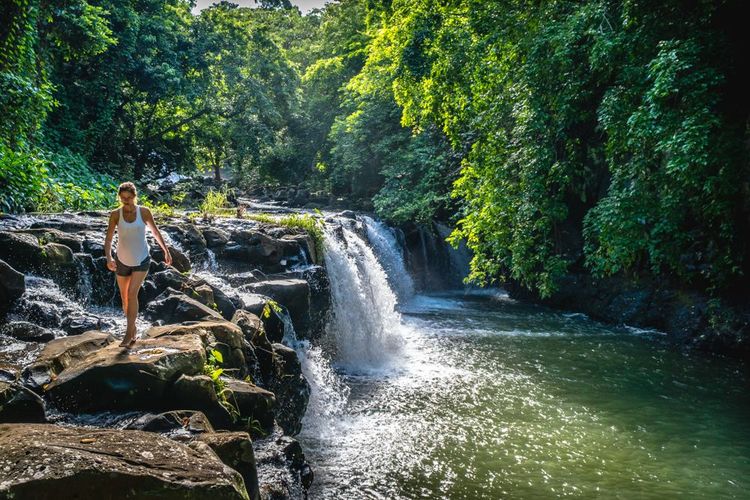
The cascade eureka
- © Daniel Malinowski / ShutterstockThe east of the island is the most exposed to the winds. Nevertheless, the coastline boasts some superb dream beaches, with filaos and discreet rocky coves. Ile aux Cerfs is the area's must-see attraction, so popular that we recommend you visit in the morning or after 4pm. This islet is linked by boats from Trou d'Eau Douce.
The west coast features lagoons, the emblematic Morne Brabant and a green carpet of sugar cane fields. Still a little removed from mass tourism, this coast hides the Gorges de Rivière Noire National Park, with its wooded valleys and waterfalls. There are also Chamarel and its 7-coloured earths, Casela Park with its many activities and Tamarin with its golf course and salt pans.

The traditional sega dance
- © Dmitry Chulov / ShutterstockA trip to Mauritius is a journey through a lush, wooded and mineral-filled Eden. You'll be carried away by the rhythm of the waves of the Indian Ocean, while enjoying the legendary hospitality and smiles of the Mauritian people. The island can be sipped like a good arranged rum, with all its diversity.


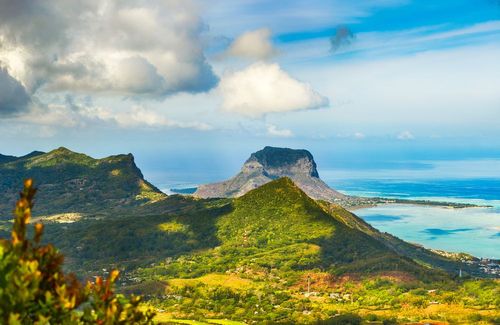
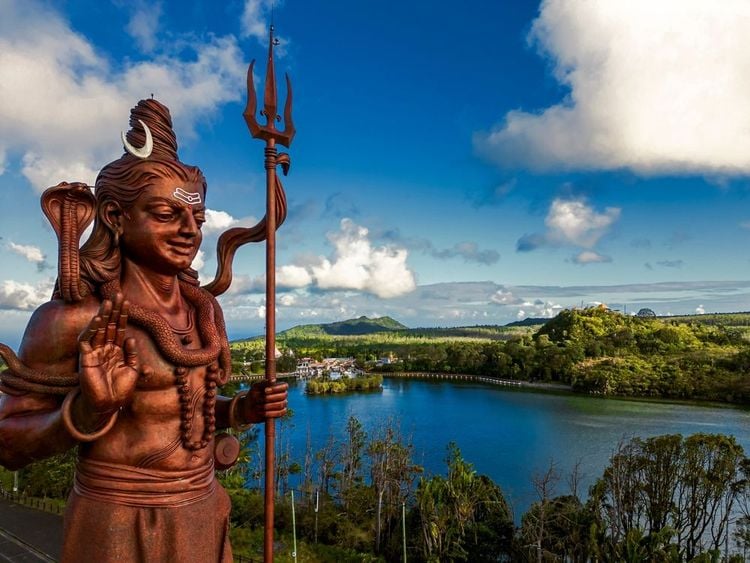 1
1
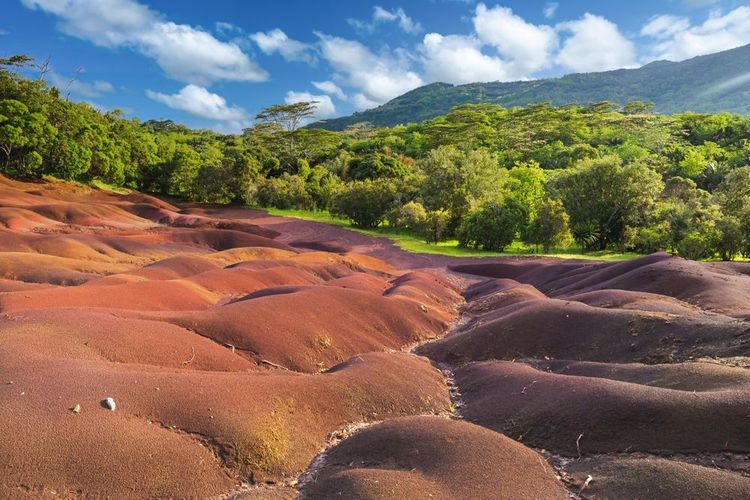 2
2
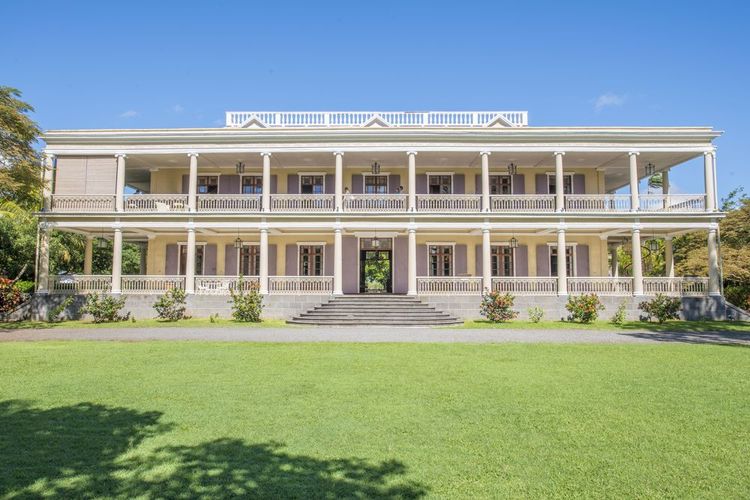 3
3
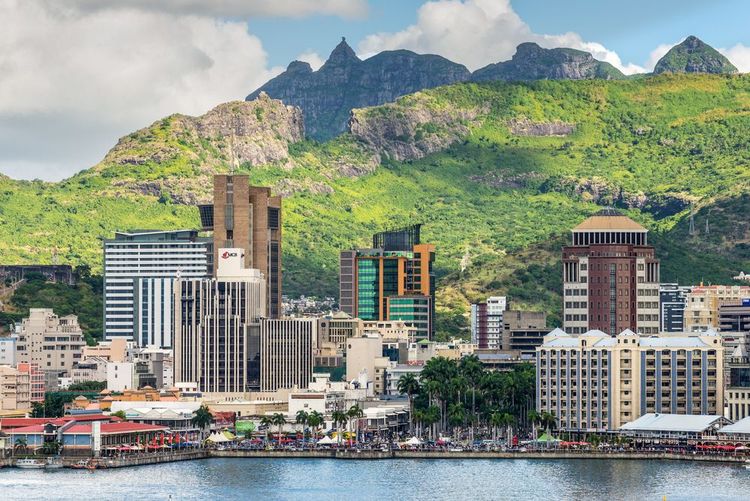 4
4
The Pearl of the Ocean is more than 3,500 km from the east coast of South Africa. From France, direct flights take around 11 hours from Paris (Air France, Air Mauritius). Lufthansa and Emirates offer flights with a stopover from Paris. Air fares for a direct flight from Paris are around 700 euros per person (depending on the airline and the period of travel).
As a tourist destination par excellence, Mauritius has no shortage of accommodation options. A beautiful belt of hotels adorns the island's coastline. There are luxury complexes, small more intimate structures, bungalows and flats, and guesthouses. Although it is always possible to have an overnight stay on the island, it is preferable to book the hotel before arrival.
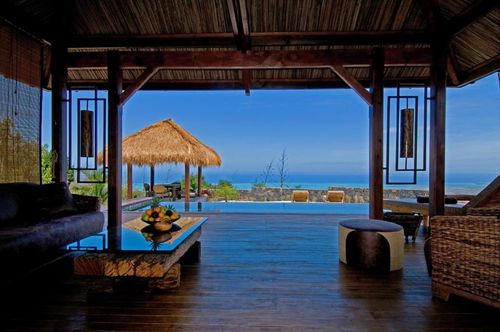
Travellers to Mauritius need a valid passport. If your stay is less than three months, you will not need a visa.
The Mauritian Rupee is used - 1 euro is equivalent to approximately 45 Mauritian Rupees. Money can be exchanged at the airport, at bureaux de change, in all banks and major hotels. Banks can be found in all major towns and tourist resorts, and credit cards are accepted in shops, restaurants and hotels.
The best way to visit the island is to hire a car. The road network consists of a good motorway linking the airport to the capital Port Louis and Grand Bay. The rest of the island is covered by national roads, which are in fairly good condition. Some secondary roads, however, are dangerous. On the island, you drive on the left, but priority is given to the right. The majority of hire companies accept European driving licences. Another option for getting around: the bus. Practical, affordable but slow, this alternative immerses you in Mauritian culture. The only drawback is that you need to be careful about timetables and routes.
Mauritius is a rare example of a country where trilingualism is imposed. The two official languages are English and French. English is used in politics, administration, business and education. French is used orally, but also in cultural venues and the press. Mauritians speak Creole on a daily basis, with a strong accent (similar to Haitian Creole). Mandarin is also spoken by the Sino-Mauritians, as well as Urdu and Bhojpuri for the Bihari, the descendants of migrants from India.
Mauritian life is punctuated by festivals throughout the year. Bringing together three continents (Asia, Africa and Europe), each community has its own special moment. However, the Hindu festivals are numerous and incredible, including the Thaipoosam Cavadee (January/February), which may shock sensitive souls. This is a rite to uplift the soul through suffering. Penitents go into a trance, pricking their bodies and faces with needles and flogging their backs while carrying a wooden arch covered in flowers. Teemeedee, a Tamil festival where people walk on fire, is also celebrated here. The Maha Shivaratree is the most popular four-day festival in Grand Bassin. Holi (festival of colours) and Divali (festival of lights) are also celebrated all over the island. Some Chinese festivals are held, notably in Chinatown in Port Louis with the Chinese New Year, the Dragon Festival (lantern lighting, dragon dance parades and concerts), the Moon Festival and the Ching Ming Festival.
With its tropical climate, Mauritius is accessible all year round. The weather map generally shows big blue skies. The seasons are reversed, so from mid-December to mid-March, the climate is hot and heavy, averaging 30°C. This is also cyclone season, with heavy rain. From May to September, the climate is temperate, with cool afternoons. Average temperatures are 25°C. From July to August, trade winds are frequent in the south-east of the island.
On the whole, the country is safe. Crime remains moderate, but it is advisable to remain vigilant, particularly in tourist and seaside areas. It is advisable not to carry valuables into town centres in the evening, to limit the risk of theft. The great danger comes from the ocean in Mauritius. Ocean currents sometimes cause people to disappear or drown. It is advisable to obey the no-swimming signs and follow the sailing conditions before going out to sea.
Avoid having a siesta under the coconut trees... coconuts may fall off. You should also be aware that naturism is not practised on the island. Topless clothing may be tolerated on the beaches of major hotels only. Finally, remember to wear plastic sandals on the beach to avoid sea urchin spines and stonefish bites.
explore Try out our comparators
It is Easy to travel

